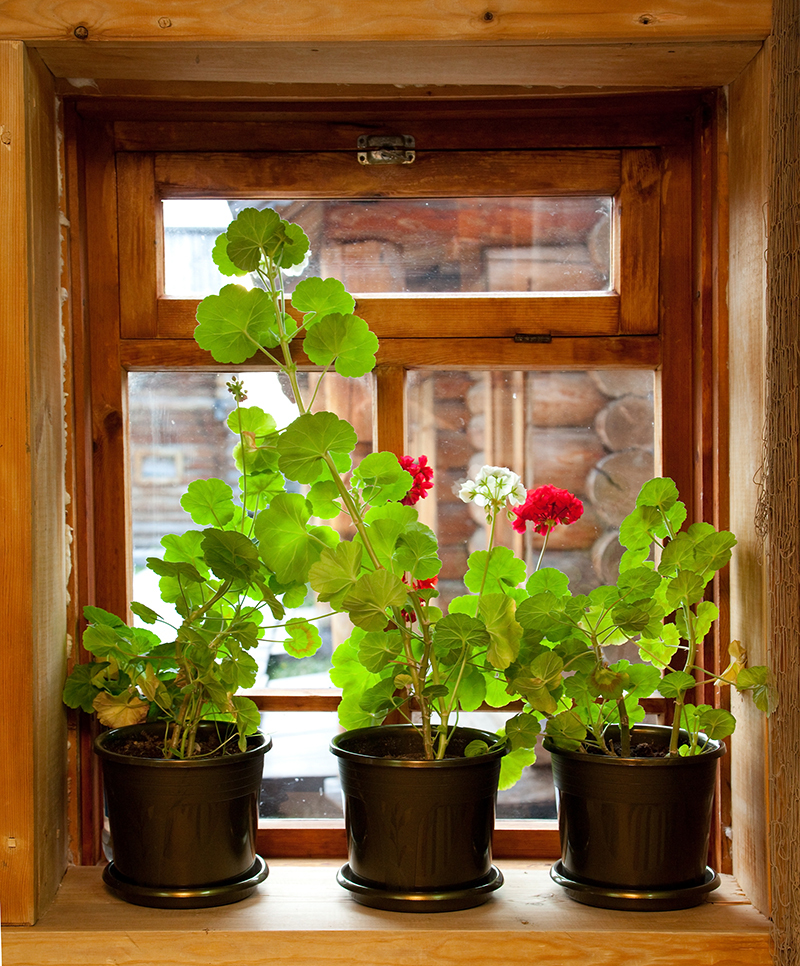The Orchid Whisperer: Secrets to Perfect Care
Posted on 30/08/2025
The Orchid Whisperer: Secrets to Perfect Care
Orchids are the jewels of the plant world: captivating, diverse, and occasionally mysterious. The allure of these resilient yet delicate blooms draws gardeners and collectors worldwide. If you've ever wondered why some people keep their orchids thriving for decades while others struggle to make it past the first bloom, you're about to discover their secret. Welcome to the world of The Orchid Whisperer, where we unravel the best secrets to perfect orchid care--from watering routines and light requirements to fertilizing strategies and disease prevention. Let's transform your growing experience and help your orchids flourish like never before.

Understanding Orchids: Beyond the Bloom
To achieve perfect orchid care, one must first understand the unique nature of these exquisite plants. With over 25,000 species and more than 100,000 hybrids, orchids offer incredible variety. From the iconic Phalaenopsis to the dazzling Cattleya and petite Dendrobium, each has its quirks and preferences. But there are universal truths--secrets that every orchid whisperer learns through years of devoted practice.
- Epiphytic nature: Most common orchids are epiphytes, which means they grow on trees and derive moisture and nutrients from the air.
- Air roots: Orchid roots crave ventilation and light, and should never be buried deep in soil.
- Rest cycles: Many orchids require periods of rest or dormancy to bloom again.
Happy orchids thrive not only because of good luck but because of an understanding caretaker. Let's uncover the steps every orchid enthusiast should follow.
1. Choosing the Perfect Orchid: Matching Plant with Personality
The first secret to orchid mastery lies in selecting the right plant for your environment. Not all orchids are created equal, and matching plant species to your home conditions sets the stage for success.
Popular, Easy Orchids for Beginners
- Phalaenopsis (Moth Orchid): Prefers indirect light and regular watering.
- Cattleya: Requires bright light and slightly drier roots between watering.
- Dendrobium: Enjoys abundant light and tolerates occasional drying out.
- Oncidium: Loves good airflow and moderate to high humidity.
Tip: If you're new to orchids, start with a healthy Phalaenopsis from a reputable nursery. Avoid plants with shriveled roots or yellowing leaves.
Select the Right Pot and Medium
Orchids can't grow in regular soil. Instead, they need a well-draining, airy substrate like:
- Bark chips
- Sphagnum moss
- Coconut husk
- Specialized orchid potting mix
Choose a pot with ample drainage--clear plastic pots let you monitor the health of roots and moisture levels.
2. The Light Lover's Secret: Sunshine Without the Burn
One of the greatest secrets in orchid care is understanding your plant's relationship with light. While natural light is crucial, too much direct sun can scorch leaves and cause stress. Orchids typically thrive in bright, indirect light--think of the dappled sunlight that filters through a tree canopy.
Signs of Proper Lighting
- Healthy green leaves suggest ideal light conditions.
- Dark green leaves indicate too little light.
- Yellow leaves or red tinges often mean too much sunlight.
Position your orchid near an east or west-facing window, or use sheer curtains to diffuse harsh sunlight from south-facing windows. If natural light is insufficient, supplement with LED grow lights for 12-14 hours per day.
Rotate Regularly
Rotate your orchids every week or two to ensure even exposure and symmetrical growth--the hallmark of a true Orchid Whisperer.
3. Watering Wisdom: Hydrate, Don't Drown
Overwatering is the most common mistake beginners make. Remember: Orchids prefer to dry out slightly between waterings. The frequency depends on the medium, pot size, and environmental humidity.
The Orchid Whisperer's Watering Rule
- Check roots and medium: Water only when the top inch of the medium is dry and roots turn silvery white.
- Water early in the day to avoid waterlogged roots overnight.
- Use room-temperature water: Preferably rainwater, distilled, or filtered tap water.
Avoid letting water collect in the crown (foliage center), which can cause rot. Water thoroughly and let excess drain out completely.
Mist But Don't Drench
If your environment is dry, lightly mist leaves and aerial roots. Don't substitute misting for real watering.
4. Humidity & Airflow: The Tropical Secret
Orchids evolved in lush, humid jungles, clinging to tree branches where the air is moist. Replicating this in your home pays dividends in vibrant blooms and health.
- Maintain humidity between 50-70%. Use a humidity tray (pebbles with water, not touching the pot base) or a cool-mist humidifier nearby.
- Increase airflow: Place a small fan in the room on a gentle setting. Good air movement prevents fungal diseases and mimics their natural conditions.
Grouping Plants
Grouping several orchids together raises local humidity levels naturally.
5. Feeding Orchids: Fertilizer Secrets for Lush Blooms
To unlock an orchid's full potential, fertilizing must be done right. The best orchid whisperers feed "weekly, weakly"--diluting balanced fertilizer to half or quarter strength every week during active growth.
- Use a balanced formula (20-20-20 or 30-10-10 for growth, 10-30-20 for blooming).
- Flush the pot with plain water monthly to prevent salt buildup.
- Reduce feeding during dormant periods (usually winter).
Organic orchid foods--such as seaweed extracts--can provide micronutrients for robust roots and leaves.
Don't Overfeed
Excess fertilizer can burn roots and stunt growth. Less is more when it comes to feeding orchids.
6. Repotting: A Fresh Start for Lasting Health
The secrets to perfect orchid care include knowing when and how to repot. Most orchids should be repotted every 1-2 years, typically after blooming or when the growing medium breaks down.
- Look for crowded or shriveled roots, or a soggy decomposed medium.
- Gently remove the plant; trim away dead roots with sterile scissors.
- Repot into fresh, moistened orchid mix, ensuring roots have space and air.
Repot only when necessary--disturbing an orchid in active bloom can cause stress.
7. Bloom Triggers: Unlocking Spectacular Displays
The quest for repeat orchid blooms is at the heart of expert care. To prompt your plant to flower again after a rest period, consider these strategies:
- Day/night temperature difference: A drop of 10?F (5?C) at night often stimulates flowering.
- Proper rest: Some species, especially Dendrobiums and Cymbidiums, require a dry, cool period after flowering.
- Gradual light increase: As the days lengthen, more light signals blooming time.
After Blooms Fade
Cut the Phalaenopsis flower spike just above a node (a visible bump) to encourage a new spike. For other types, cut old spikes at the base and allow the orchid to rest before resuming regular care.
8. Pest and Disease Management: Keeping Orchids Healthy
Even carefully tended orchids can face challenges. The Orchid Whisperer pays close attention to early warning signs:
- Spider mites: Look for fine webbing and mottled leaves.
- Scale and mealybugs: Sticky residue and small, cottony blobs on leaves or stems.
- Fungal or bacterial rot: Mushy spots or leaf discoloration, often from overwatering.
Natural Solutions
Prevent and cure with:
- Insecticidal soap or neem oil spray for pests
- Improved airflow and dryness for fungal issues
- Sterile tools and clean pots during repotting
9. Secrets to Long-Lived Orchids: Legacy Plants
The true hallmark of an orchid whisperer is a collection that thrives for decades. The oldest cultivated orchids are over 100 years old! To join the ranks:
- Observe and adapt: No two orchids are exactly alike--learn your plant's rhythm.
- Keep detailed care notes: Record watering, feeding, and blooming cycles.
- Share divisions: When your orchid outgrows its pot, divide and repot to create new plants--often cherished gifts among friends.
10. Orchid Whisperer's Advanced Tips
- Use cinnamon as a natural fungicide after pruning or repotting--dust light wounds to prevent infection.
- Try mounting orchids on cork bark for a show-stopping, natural display if you can provide enough humidity and frequent misting.
- Participate in orchid societies--locally or online--to swap stories, troubleshoot problems, and share the joy of these captivating plants.
Orchid Care Frequently Asked Questions
How often should I water my orchid?
It depends on species and environment: Most need watering every 7-10 days. Always check roots and medium dryness before watering.
Why are my orchid leaves turning yellow?
Common causes: Overwatering, excessive sunlight, old leaves, or a sign of aging. Check roots and adjust care routine accordingly.
What's the best location for orchids indoors?
Choose a spot with bright, filtered light and good air movement--often east or west-facing windowsills with sheer curtains.
Do orchids need fertilizer?
Yes! Use a diluted, balanced fertilizer during growth periods; reduce or stop feeding in winter dormancy.

Conclusion: Unlock Your Inner Orchid Whisperer
Caring for orchids is both an art and a science, combining patient observation with expert techniques. By embracing these orchid care secrets--from ideal light and humidity to watering, feeding, and attentive pest management--you'll watch your orchids reward you with luscious leaves and breathtaking repeat blooms.
Remember: The key to being an orchid whisperer is listening not just with your eyes, but with your intuition and understanding. Tweak your techniques, experiment, and soon, your home will echo with the beauty and mystique of one of nature's finest creations. Happy growing!
Recommended Resources for Further Mastery
Become an Orchid Whisperer Today--Start with the Very Next Watering!
Latest Posts
The Ultimate Office Plants That Thrive on Minimal Care
The Orchid Whisperer: Secrets to Perfect Care
The captivating history of Valentine's Day red roses







